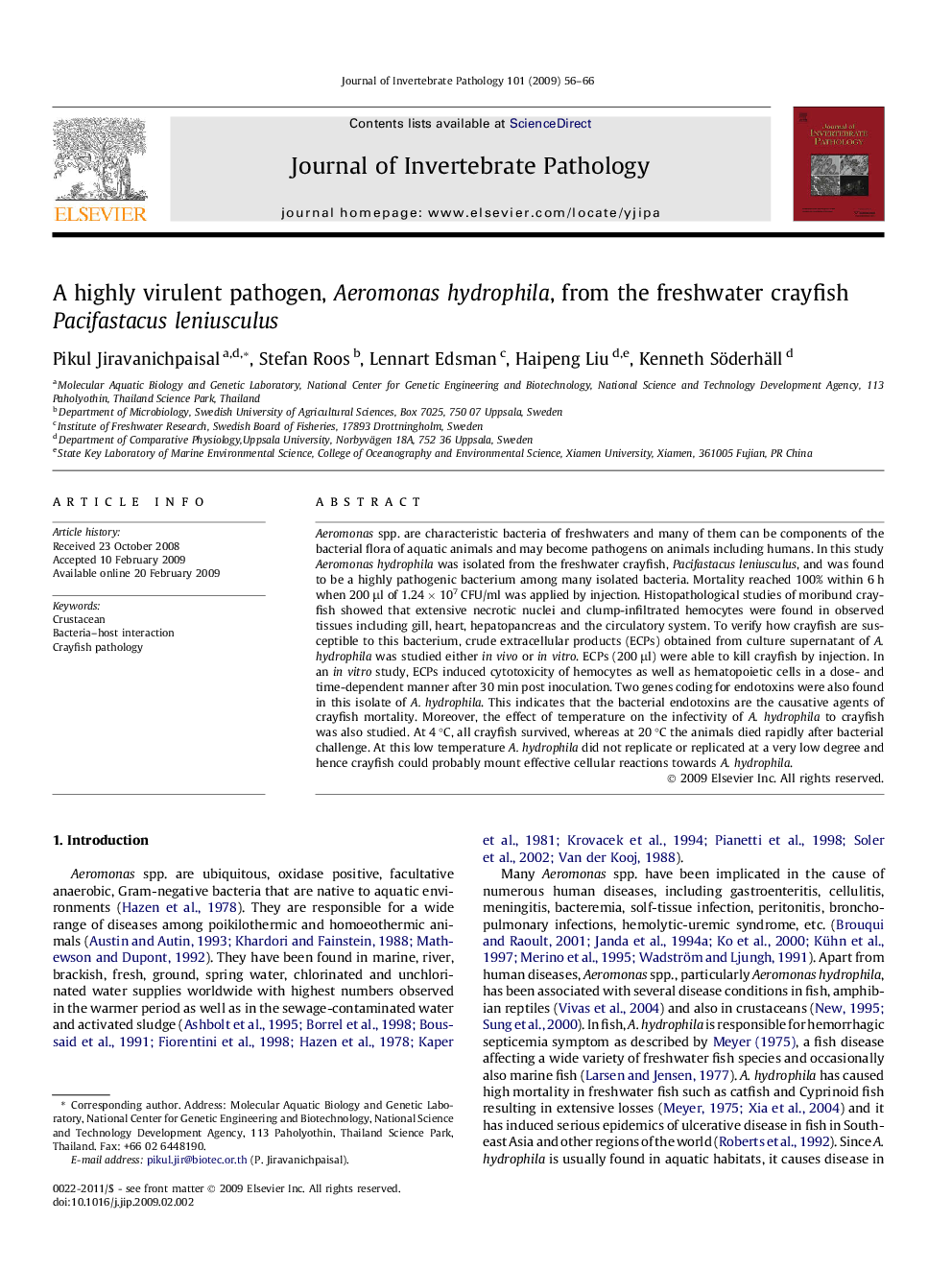| Article ID | Journal | Published Year | Pages | File Type |
|---|---|---|---|---|
| 4558238 | Journal of Invertebrate Pathology | 2009 | 11 Pages |
Aeromonas spp. are characteristic bacteria of freshwaters and many of them can be components of the bacterial flora of aquatic animals and may become pathogens on animals including humans. In this study Aeromonas hydrophila was isolated from the freshwater crayfish, Pacifastacus leniusculus, and was found to be a highly pathogenic bacterium among many isolated bacteria. Mortality reached 100% within 6 h when 200 μl of 1.24 × 107 CFU/ml was applied by injection. Histopathological studies of moribund crayfish showed that extensive necrotic nuclei and clump-infiltrated hemocytes were found in observed tissues including gill, heart, hepatopancreas and the circulatory system. To verify how crayfish are susceptible to this bacterium, crude extracellular products (ECPs) obtained from culture supernatant of A. hydrophila was studied either in vivo or in vitro. ECPs (200 μl) were able to kill crayfish by injection. In an in vitro study, ECPs induced cytotoxicity of hemocytes as well as hematopoietic cells in a dose- and time-dependent manner after 30 min post inoculation. Two genes coding for endotoxins were also found in this isolate of A. hydrophila. This indicates that the bacterial endotoxins are the causative agents of crayfish mortality. Moreover, the effect of temperature on the infectivity of A. hydrophila to crayfish was also studied. At 4 °C, all crayfish survived, whereas at 20 °C the animals died rapidly after bacterial challenge. At this low temperature A. hydrophila did not replicate or replicated at a very low degree and hence crayfish could probably mount effective cellular reactions towards A. hydrophila.
